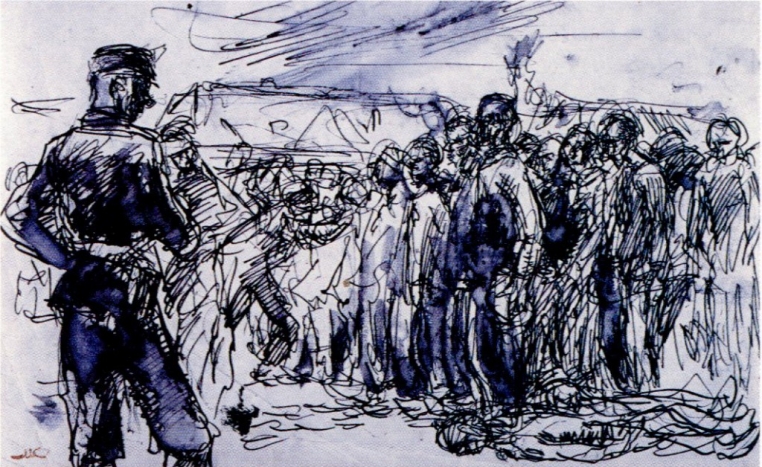
If cliché leads us to believe that art arises from suffering, there are few circumstances in which the language of art could be more direct, more profound, or more moving than art made in the European camps of World War II. The Last Expression presents – often for the first time – what has until now been the relatively unknown art of victims whose work was created while in the maelstrom of the Holocaust. It places on view drawings, paintings, and prints made between 1941 and 1945 by victim artists. While all of the men and women whose work is seen in The Last Expression were either incarcerated at Auschwitz or died there, some of the work was done during incarceration at other camps such as Gurs and Drancy or in ghettos such as Lodz or Theresienstadt.
In extreme and physically threatening circumstances that would seem to thwart creative power, art functioned as a survival strategy, a means of catharsis, and an act of documentation and resistance. Art produced at Auschwitz was made by both amateur and trained artists, by those who gave expression to the suffering as well as those who needed to repress it. Some used art to combat hunger, obtain lighter work details, or gain other goods needed for survival.
The poignant, clandestine images of the hungry and the dead, the illustrated training manuals executed for the SS, landscape paintings used to decorate SS barracks, and painted letters sent from the camp are all part of a complex and disturbing culture of artistic production that gives insight into the diversity of art created under duress. Sometimes working in secret and at other times on command, often hiding drawings under floorboards or smuggling portraits to the outside world, each of the artists of the more than 170 works in The Last Expression presented an incredible story and a unique perspective on the role the arts played in the Holocaust. Drawn from collections in Poland, Israel, the United States, Germany, and France, this exhibition presents one of the most comprehensive presentations of art done by victim artists while engulfed in the Holocaust.